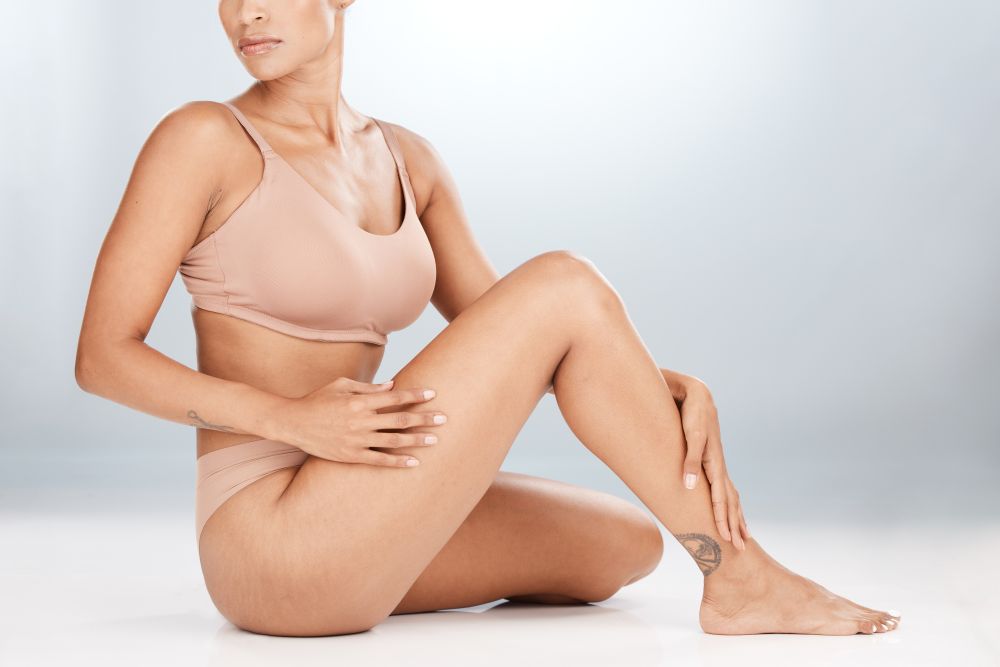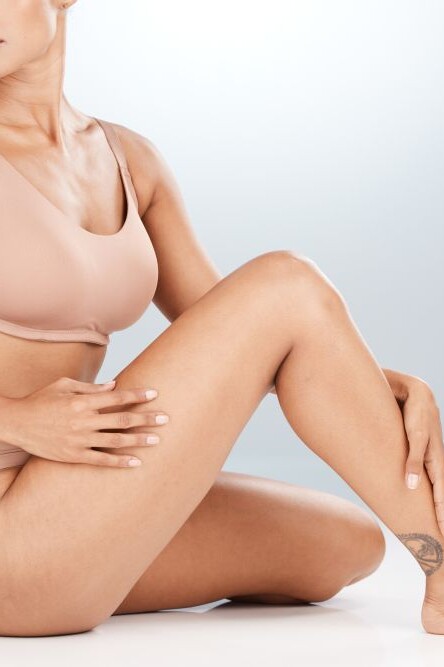- Home
- Treatments
- Vein Treatment
Sclerotherapy

Find an Effective Spider Vein Treatment in Albuquerque
Sclerotherapy at Albuquerque’s Western Dermatology Consultants is one method for treating spider veins—those unsightly clusters of red, blue, or purple veins that occur on ankles, thighs, and calves. It is estimated that at least half of the adult female population is plagued with spider veins, which are connected with the larger system of blood vessels but are not a necessary part of the circulatory system. Consequently, removing them with vein treatment does not have adverse consequences for circulation and blood delivery.
Technically known as telangiectasia, spider veins are primarily a cosmetic issue, though their appearance may be accompanied by other symptoms, such as swelling in the legs. Sclerotherapy is a solution for the cosmetic aspect. It can also be used to reduce smaller varicose veins, which are larger, twisted blood vessels that bulge out, usually on the lower extremities. Varicose veins can be associated with medical issues, so treating them may need to involve more than a cosmetic fix.

Contact Us
Talk to our team about sclerotherapy in Albuquerque at Western Dermatology Consultants. Call 505-855-9267 or inquire online about a free consultation to find out more.
What Are Spider Veins and Varicose Veins?
Spider veins and varicose veins are two variations of a condition that leads to vessels becoming visible through the surface of the skin—usually on the face (spider veins) or legs (spider or varicose veins). These malformations are typically painless and usually do not present any health risk, though in some cases, patients who develop varicose veins may experience more severe symptoms such as discomfort, swelling, or itching.
Spider veins are lines that form in a small branch-like or spiderweb pattern and may appear red, purple or blue. They may be flat or slightly raised. Varicose veins, on the other hand, stick out from the skin as large flesh-colored or darker cords that may look lumpy or twisted.
Patients may wish to have visible blood vessels removed with sclerotherapy to relieve discomfort, for aesthetic reasons, or both.
What Causes Spider Veins?
“Chronic venous insufficiency” is a problem with the circulation of blood, commonly associated with spider veins and varicose veins. Veins are blood vessels that transport blood back to the heart.
Blood is supposed to move in one direction through your veins, but weakness in the valves that regulate blood flow can allow some blood to seep backward and pool, creating visible lines in the skin. If the backup causes visible veins to become thicker and larger, they are known as varicose veins. Smaller lines are known as spider veins. More than twice as many women have spider veins than men.
The one-way valves that prevent blood from flowing backward in our veins naturally tend to get weaker and lose their elasticity over time, but sun damage can contribute to the problem, as can fluctuating hormones, genetics, and age.
Increased pressure can also lead to spider veins, so anything that causes the heart to pump harder is a potential factor in their development. Being overweight, pregnancy, and long periods of standing or inactivity are common culprits. Western Dermatology Consultants can explain more about these veins, as well as how sclerotherapy works as a safe and reliable method of correcting such vein irregularities.
How to Prepare for Sclerotherapy
Sclerotherapy is a simple and relatively painless vein treatment procedure, but a little preparation work can go a long way toward optimizing results. While it can be easy to spot the telltale signs of spider veins in the skin, it’s best to have them checked out by a certified physician who can examine and officially diagnose unwanted blood vessels on the face or body. The doctor can also recommend the best cosmetic dermatology treatment strategy, whether sclerotherapy, laser vein treatment, or something else.
Sclerotherapy isn’t the ideal form of vein treatment for everyone. A physician will review your medical history and conduct a physical exam. During your initial consultation, you may be advised to stop taking medicines such as blood thinners (which increase the risk of bleeding) prior to your sclerotherapy treatment. Your provider may recommend having a special ultrasound, depending on which veins are involved.
If you’re having sclerotherapy on your legs, don’t shave or apply lotion to the area the day before the vein treatment or during recovery, as this can cause the skin to become irritated. Dress for comfort on the day: Loose-fitting shorts or longer pants are usually a great choice.
How Does Sclerotherapy Work?
For this vein treatment procedure, a medication is injected into the veins using a very fine needle. The medication in sclerotherapy is considered a “sclerosant,” and its function is to irritate the wall of the blood vessel. This causes scarring, which closes the vessel off to the rest of the circulatory system, preventing it from carrying any more blood. The scarred blood vessel is eventually reabsorbed by the body and disappears.
The sclerotherapy vein treatment procedure usually takes 30 to 45 minutes and is done in our office. Most people tolerate the procedure well, with minimal discomfort, and no anesthesia is required.
It typically takes at least one month after a sclerotherapy sessions for the veins to resolve, and more than one treatment may be necessary to completely treat the spider veins. The number of sclerotherapy treatments needed may depend on the size and number of veins that are being treated.
Our doctors have collectively been performing sclerotherapy vein treatment for more than 35 years. We continually update our information and techniques as new procedures and information become available.
The cost of sclerotherapy will depend on the scope of the treatment and can be discussed with a member of the Western Dermatology team.
Results and Recovery from Sclerotherapy
After a sclerotherapy vein treatment on the legs, you may be asked to maintain pressure on the treatment area by wearing compression stockings or dressings for a few weeks.
Spider veins on the face, which are typically treated with lasers, require no special post-treatment care, though you should avoid sun exposure to any treated areas. The skin will likely have a sunburn-like appearance for a couple of days, though the redness and sensitivity will fade.
Sclerotherapy and other vein treatments can result in significant improvements for patients who are suffering from the symptoms of chronic venous insufficiency by helping blood to flow better and reducing localized swelling.
Contact Us
Call 505-855-9267 to learn more about vein treatment with sclerotherapy in Albuquerque at Western Dermatology Consultants. You can also contact us online.
More Vein Treatment Options
In addition to sclerotherapy, Western Dermatology Consultants also uses laser and light treatments to achieve similar results. Lasers provide a less invasive method of destroying unwanted veins by applying pulses of heat energy to collapse the vessel walls and causing the visible veins to be absorbed into the body.
Typically, lasers are used to treat veins on the face, while sclerotherapy is employed to target veins on the legs. The Cutera laser is also ideal for reducing the appearance of wrinkles, brown spots, and general redness that keeps skin from appearing clear and even. Its long, unique laser wavelength makes it especially efficient and reliable for all skin tones.
Another alternative to sclerotherapy for diminishing visible spider veins and red blotches on the skin is a photofacial. Intense pulsed light (IPL) treatment is an option that generates multiple wavelengths of light to reduce unnecessary spider veins and redness, along with other surface lesions, age spots, or freckles. This light is absorbed by darker-colored cells in the skin (such as visible blood vessels), which damages them and ultimately clears them away.
